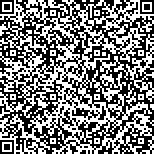下载中心
优秀审稿专家
优秀论文
相关链接
首页 > , Vol. , Issue () : -
摘要

针对单纯借鉴图像处理、计算机视觉技术未能很好解决遥感地学认知问题,本文从地理学的区域、尺度、格局与功能基本原理出发,对面向对象影像分析的地理学内涵进行阐述,进而提出以等级斑块结构建模为核心、融合循环迭代机制的面向对象影像分析框架,以期为地理学思维引导下的遥感智能解译方法研究提供启发。
In the past two decades, Geographical Object-Based Image Analysis (GEOBIA) is widely studied and applied, but still doesn’t fit well the expectation for the big remote sensing images analysis in geographical cognition activities both in accuracy and intelligence aspects. We think that a main problem is the lack of geographical thoughts to lead the research and development (R&D) of GEOBIA key techniques, especially when introducing the techniques of computer vision which doesn’t regard comprehending the earth’s surface as the objective. With this thought, we review the concepts of GEOBIA from geographical perspective, specifically principles of Region, Scale and Pattern & Function. From Region principle, we regard that the image segmentation in GEOBIA grouping the spatial neighbor pixels sharing similar spectral and textures, as the representation of a fine scale geographical zoning in remote sensing image space. From the Scale principle, we regard that the multi-scale of segmentation as the representation model quantifying the relationship of geographical zones among different scales. And from Pattern & Function principle, we regard the multi-scale segmentation as an ideal hierarchical patch model representing the earth surface structure, i.e. the landscape, and could quantify the pattern (like orientation, shape, arrangement, distance, etc) for the function recognition. In other words, we think that the target of GEOBIA is to recover the hierarchical multi-scale structure of earth surface from the remote sensing images, so that we can quantifying the structure and then recognize and comprehend its function. Based on these reviews, we propose an iterative GEOBIA framework where the core is constructing a hierarchical patch model of the earth’s surface. The framework starts with fusing the big geographical data including remote sensing images, existing geographical thematic maps, and other helpful knowledge, to construct an initial hierarchical patch model of the earth’s surface; then, extracting objects’ features from the hierarchical patch model and recognizing the function of these objects, where the features includes the internal features extracted from the object itself like shape and spectrum, and the external features extracted from its relationship with other objects like its neighbor objects, parent objects and children objects; finally, using the recognized results to update the hierarchical patch model for the next recognizing cycles. With the iterating of the remote sensing image analysis goes on, we could have a more and more accurate geographical object recognition ability as we also have a more accurate hierarchical patch model describing the earth’s surface because of the updating process which could provide more accurate object’s features calculation. To achieve above proposed framework, we also propose a few of suggestions for further R&D, such as constructing different hierarchical patch models for different geographical elements, fusing multi-resolution images by hierarchical patch model instead of pixels, and choosing the suitable interpretation models instead of one model for different big geographical patches. We hope above thoughts could provide an instructive idea of how to embed the geographical knowledge into the intelligent interpreting models to achieve more accurate new knowledge extraction from the big remote sensing images.

